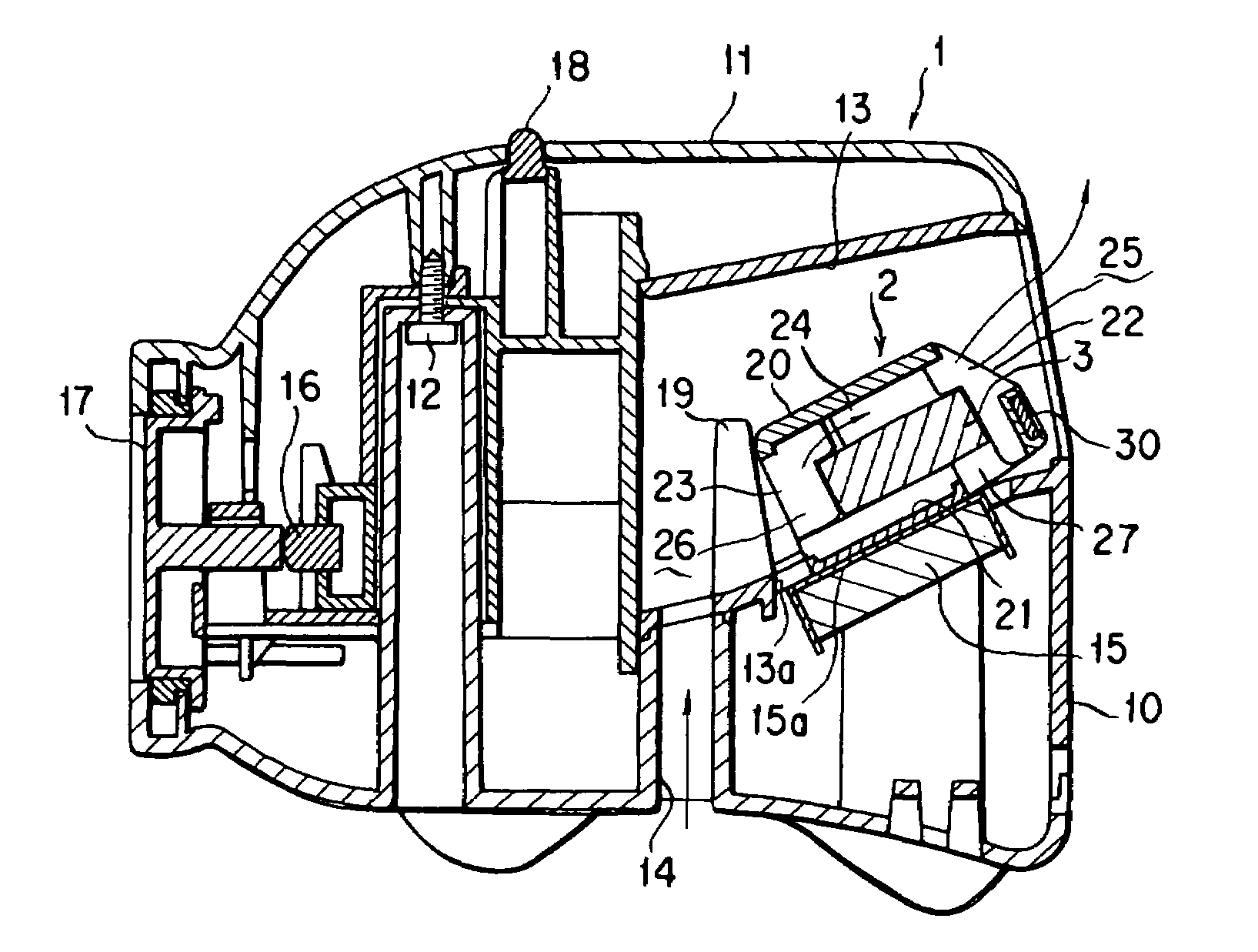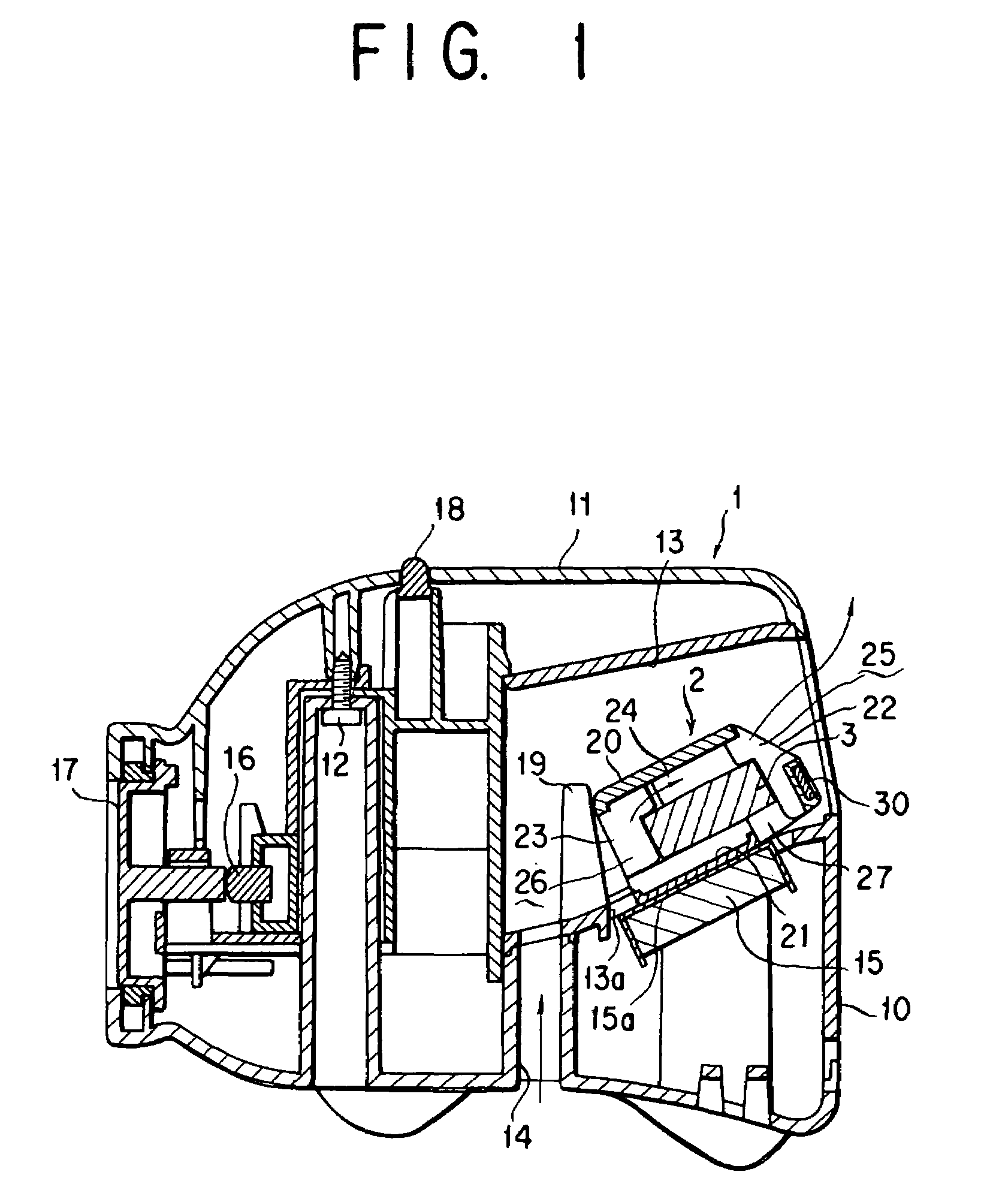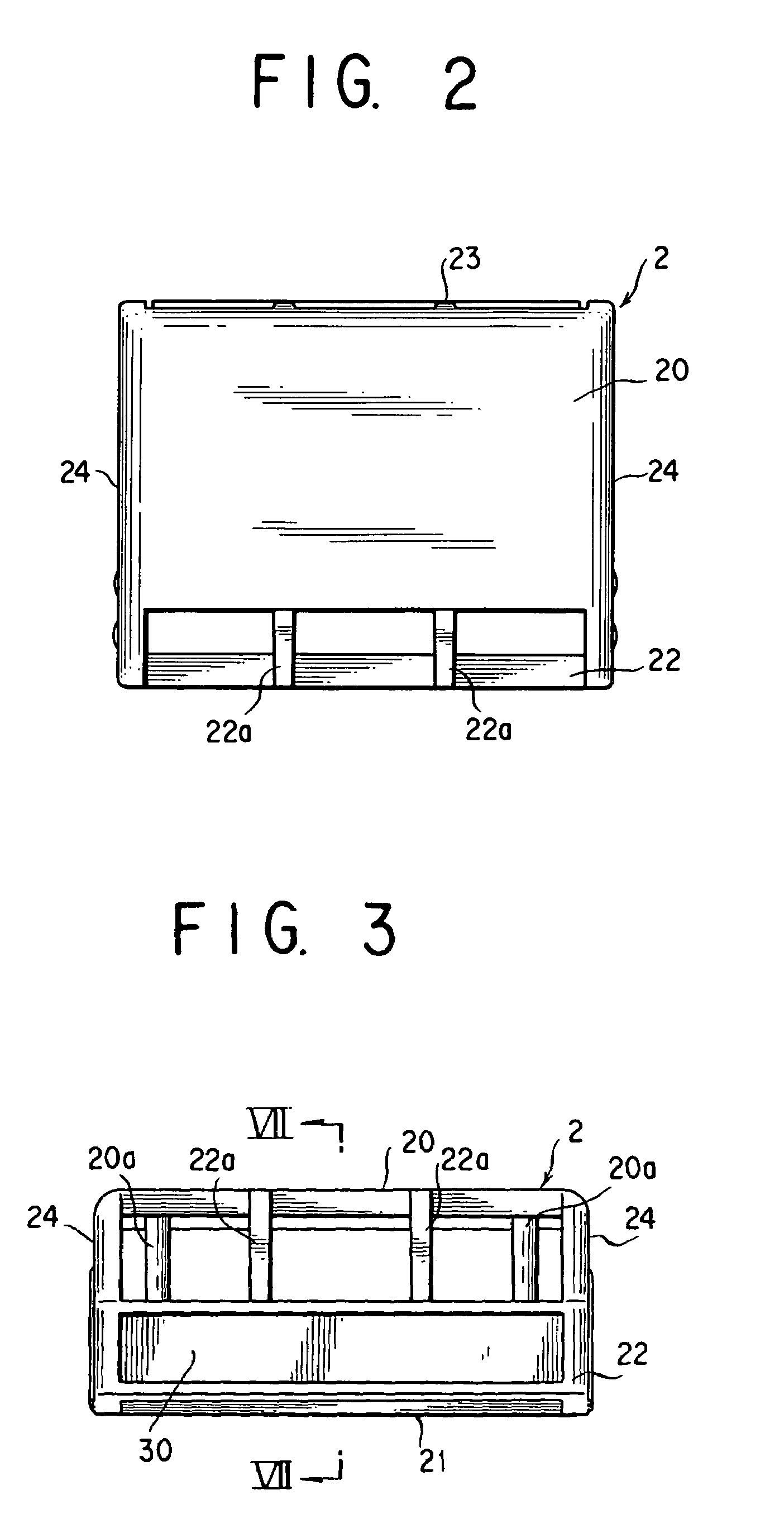Chemical-containing formed material of type of heating of whole the material, container for holding chemical-containing formed material, device for heating and transpiring chemical and indicator for chemical to be heated and vaporized
- Summary
- Abstract
- Description
- Claims
- Application Information
AI Technical Summary
Benefits of technology
Problems solved by technology
Method used
Image
Examples
first embodiment
[0151]Mention is next made of the indicator 30 according to the present invention.
[0152]Here, the base layer 31 is white, while the color and shade changing layer 32 is white before its color and shade changing and is red after its color has been changed.
[0153]The printed layer 33 as shown in FIG. 10 has characters “START”, a first mark representing the chemical's start point printed in red, characters “END”, a second mark representing the chemical's end point printed in white, and an arrow headed from the “START” characters' side towards the “END” characters' side printed, thereon.
[0154]That arrow is graduation printed so that its “START” characters' side is printed in red, becoming thinner towards its “END” characters' side that is printed in white.
[0155]The indicator 30 when the heating, volatilization of the chemical is started presents the appearance as shown in FIG. 11, at the stage (a) that the “START” characters and only a root portion of the arrow closer to those characters...
second embodiment
[0161]Mention is next made of the indicator 30.
[0162]Here again, the base layer 31 is white, while the color and shade changing layer 32 is white before its color and shade changing and is red after its color has been changed.
[0163]As shown in FIG. 12 the printed layer 33 in addition to having the characters “START” printed in red and the characters “END” printed in white has here, a first band region 35 printed in white, a second band region 36 printed in red lighter in shade, a third band region 37 printed in red somewhat darker in shade, and a fourth band region 38 printed in red identical in shade to the “START” characters, thereon in succession between its opposite ends.
[0164]The indicator 30 when the heating volatilization is initiated presents the appearance as shown in FIG. 13, at the stage (a) that the “START” characters and the second, third and fourth band regions 36, 37 and 38 are visible.
[0165]With a lapse of the chemical's heating time, the color and shade changing lay...
third embodiment
[0170]Mention is next made of the indicator 30 with reference to FIGS. 14 and 15.
[0171]As shown in FIG. 14, the printed layer 33 made of a transparent film has a left hand side half 33a printed in red except for characters “Yes” and its remaining right hand side half 33b printed in white except for characters “No”.
[0172]The printed layer 33 further has characters “Serviceable” printed in white to the left of the characters “Yes” transparently taken out in the left hand side half 33a.
[0173]When the chemical's heating volatilization is initiated, the indicator 30 here presents the appearance as shown in FIG. 15, at the stage (a) that the characters “Serviceable Yes” are visible.
[0174]With the lapse of the chemical's heating time, the color and shade changing layer 32 is gradually changing its color and shade to red, and the indicator 30 is changing its appearance such that the characters “Yes” are becoming gradually darker in shade and invisible from visible while the characters “No”...
PUM
 Login to View More
Login to View More Abstract
Description
Claims
Application Information
 Login to View More
Login to View More - R&D
- Intellectual Property
- Life Sciences
- Materials
- Tech Scout
- Unparalleled Data Quality
- Higher Quality Content
- 60% Fewer Hallucinations
Browse by: Latest US Patents, China's latest patents, Technical Efficacy Thesaurus, Application Domain, Technology Topic, Popular Technical Reports.
© 2025 PatSnap. All rights reserved.Legal|Privacy policy|Modern Slavery Act Transparency Statement|Sitemap|About US| Contact US: help@patsnap.com



